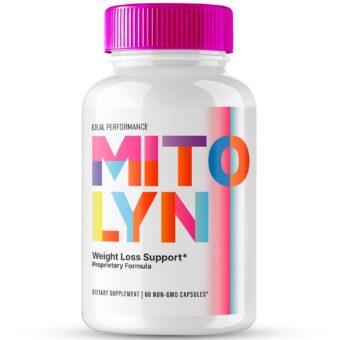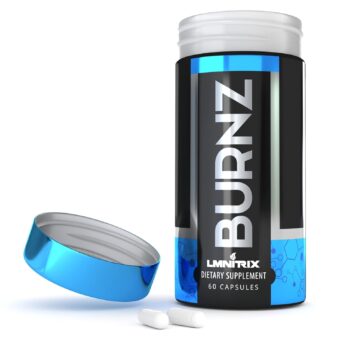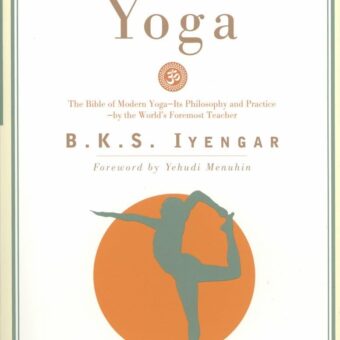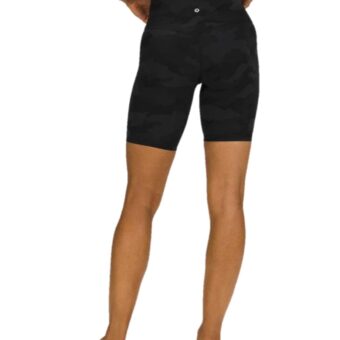Yoga is one of the sports loved by many people because of the positive effects it brings to the body. One of the important factors in practicing yoga comfortably and effectively is choosing a quality yoga mat. Today’s article, Your Health and Beauty, will introduce how to choose the right yoga mat to practice for those new to this subject. Explore now…
Why do you need a yoga mat?
Choosing a standard yoga mat is an essential factor that you should pay attention to when first practicing yoga. A good mat has many useful uses, helping your workout process take place comfortably and achieve more optimal training results, specifically as follows:
Yoga mat prevents slipping.
Most yoga movements require the ability to maintain balance throughout the practice. Practicing yoga on a mat helps you gain grip, avoiding slipping and causing unwanted injuries.
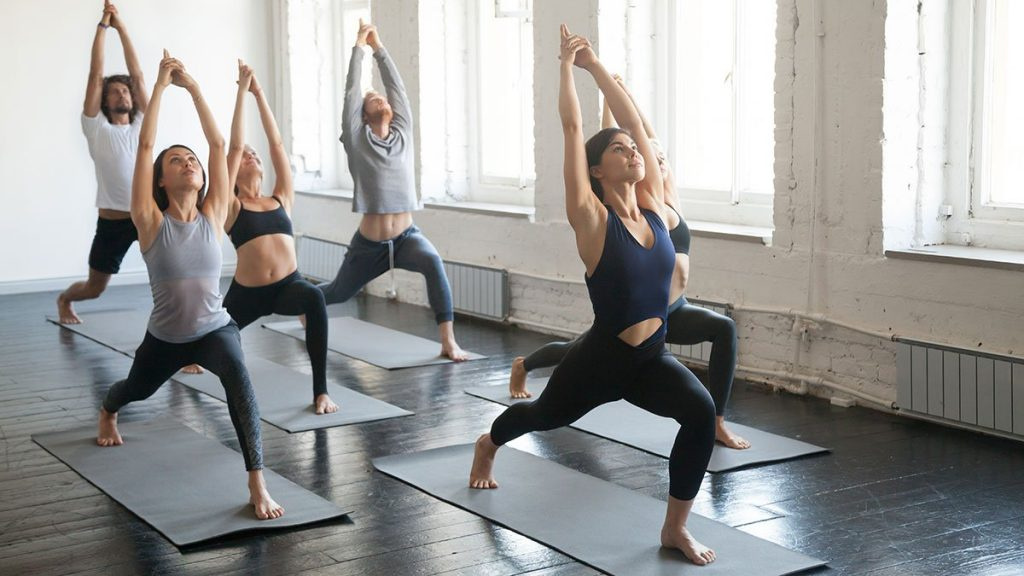
Yoga mats help maintain balance and prevent slipping when practicing yoga (Source: Internet)
Keep your body clean.
Whether practicing at home or in yoga centers, the floor is always a place to accumulate bacteria, containing many pathogens that affect the body’s health. Therefore, choosing to practice with a yoga mat will help limit the body’s direct contact with the floor so that the body is always clean and avoids many dangers.
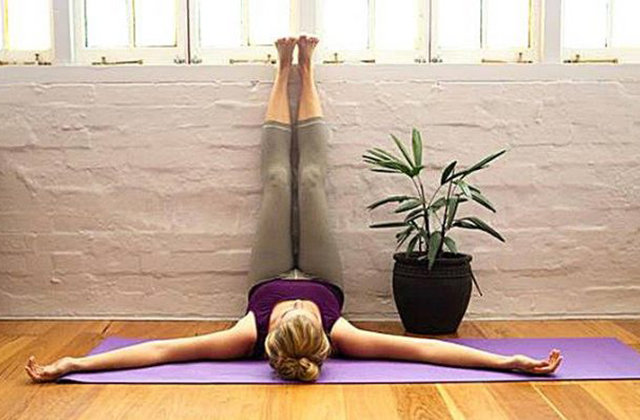
Prevents calluses on hands and feet
Some yoga poses require a lot of support from the knees or elbows on the floor, such as camel pose, candle pose, child’s pose, etc. If you do these exercises without a mat, it causes calluses and dark spots on your hands and knees over time, creating an unsightly aesthetic.
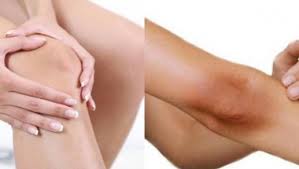
Do not use a yoga mat; it will cause conditions such as corns and dark knees (Source: Internet)
Keep your body warm.
When practicing yoga, the whole body will often be in direct contact with the ground. Especially in cold seasons, a yoga mat will help keep your body warm during exercise.
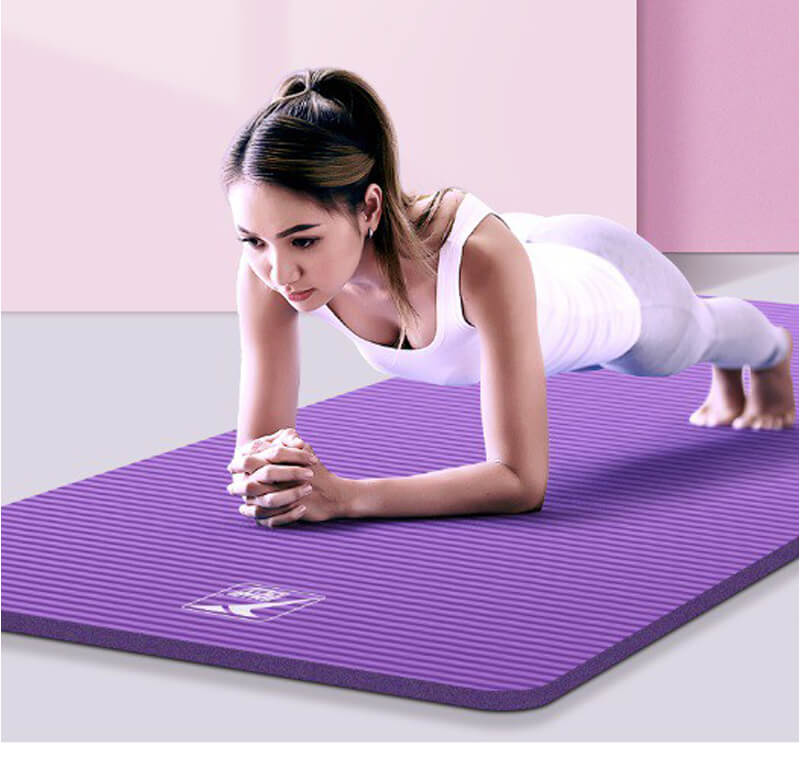
Instructions for choosing the right yoga mat for beginners
1. Yoga mat thickness and weight
A thick or thin mat greatly affects the experience of practicing yoga. Depending on your needs, choose the right yoga mat for yourself. For example, if you need to carry an exercise mat with you often, you should consider choosing a thin mat that is light in weight. Or if you need comfort when exercising, choose a mat with a thickness of 6–8 mm that is convenient for kneeling and hand-holding movements.
Thick yoga mats are suitable for slower recovery or therapeutic exercises, as they provide optimal comfort when performing kneeling and handstand positions. Thin yoga mats are lighter, easier to carry, and provide better balance in standing positions.
If you are wondering which size to choose, you can refer to the 3mm standard mat, which is suitable for vigorous exercises and lots of movement. This type of yoga mat sticks firmly to the floor, allows practitioners to perform in many different positions, and does not get in the way when moving on a thick mat.
2. Yoga mat material
Normally, a thick yoga mat will last longer than a thin one. But in reality, thick or thin carpets have a. The long lifespan means we don’t need to worry too much about durability. Long mat material is one factor to consider when buying a yoga mat.
2.1. Polyvinyl Chloride (PVC) Mat:
It is a plastic-based material and is also the main component of many yoga mats. PVC is durable, cleans easily, and has strong adhesion. This material is waterproof, so if it gets wet, it will be very slippery. In addition, PVC also does not contain latex, so it is suitable for people who are allergic to latex. However, compared to other materials, PVC is less environmentally friendly.
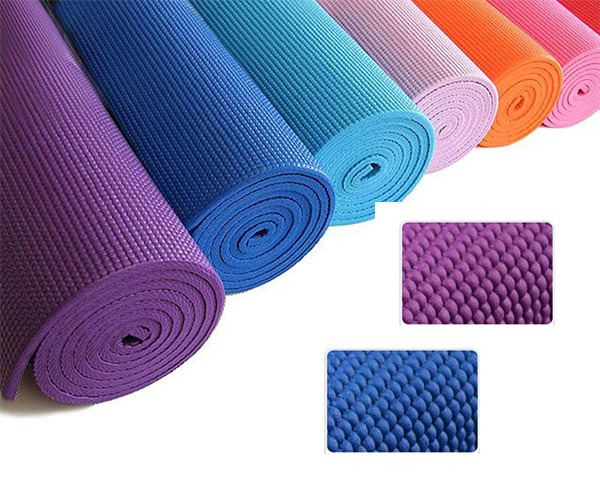
2.2. TPE mats.
Also known as thermoplastic elastomers, they are a mixture of rubber and plastic polymers. Compared to PVC mats, TPE mats are more environmentally friendly; some types of TPE mats are completely recyclable. Although not as durable as PVC mats, TPE mats still create a good friction force.
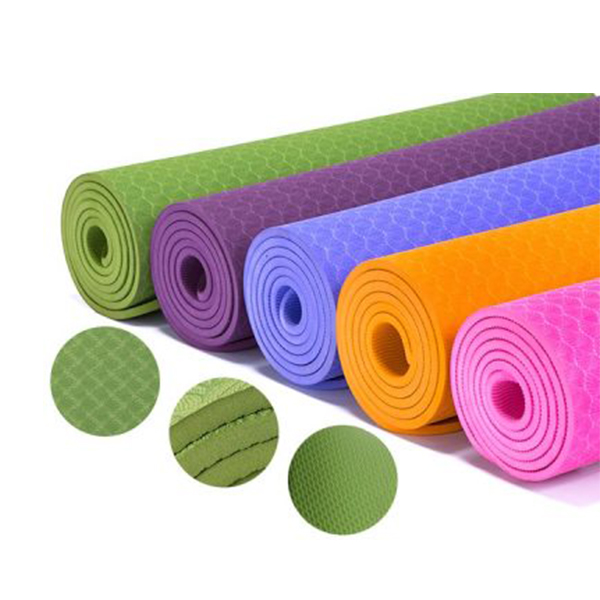
2.3. Natural rubber mats
Eco-friendly mats are made from natural rubber, cotton, and jute and are popular among yoga practitioners. Although their grip on the floor is limited, they can create a lot of friction on their hands and feet. This type of carpet is also not as durable as PVC, but if you prioritize environmentally friendly products, it is still worth a try.
Additionally, do not choose yoga mats made of natural rubber if you are allergic to latex.
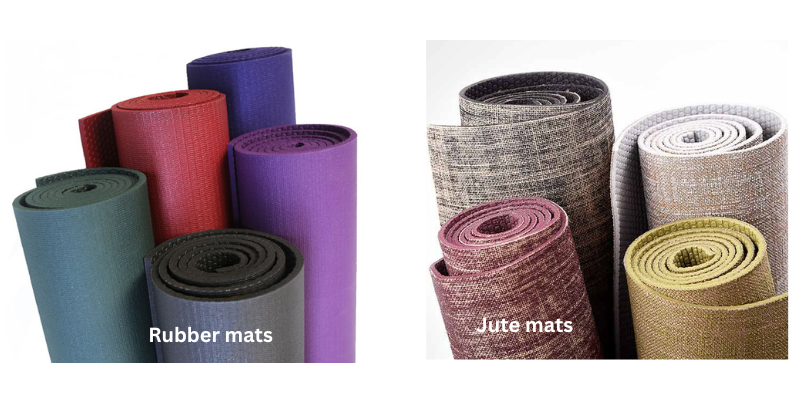
3. Yoga mat price
Choosing a yoga mat also includes price factors, such as the material, manufacturer brand, and size.
Carpets made from PVC material will have a cheaper price than other products; in return, the durability and anti-slip ability are not high. Mats that are moderately thick, soft, have high adhesion, do not stick to the skin, and come from reputable brands will have a higher price.
Therefore, if you plan to stick with yoga for a long time, you should invest in a standard practice mat to support more effective practice.
4. Where to buy yoga mats
You can choose to buy yoga mats directly at specialized sports stores or shop online on e-commerce sites like Amazon, Clickbank, etc. You can buy yoga mats from some famous brands chosen by many “yoga experts,” such as Adidas, Reebok, Manduka, Gaiam, Retrospec Solana, etc.
Above is information on how to choose a yoga mat suitable for beginners. Hopefully, after reading the article, you will know many useful tips to apply when choosing to buy a yoga mat suitable for your needs.

